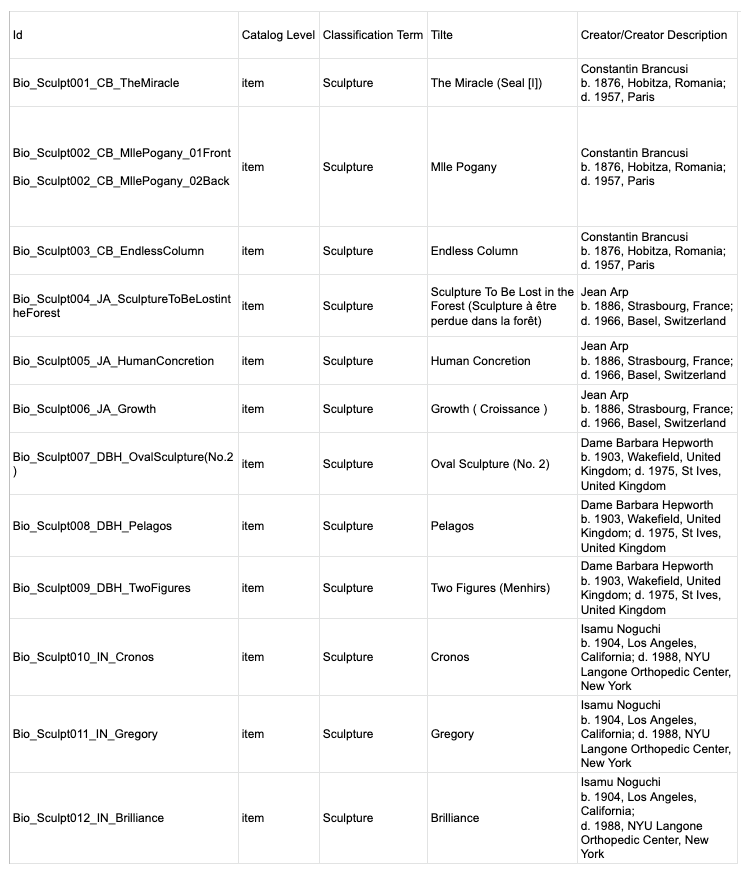
Constantin Brâncuși Atelier Workshop
Bios + Morphe = Biomorphism
Museum Information Management is the core study to manage museum’s collection. For this project, I created a sculpture collection of museum objects from various online repositories and using Omeka S, which is an open-source content management system, to showcase it. The collection page also compiled descriptive metadata using Metadata Standards Crosswalk to controlled vocabularies to describe the scope and context of the materials.
I chose Biomorphism sculpture as my key research topic and found four representative artists: Constantin Brancusi, Jean Arp, Barbara Hepworth, and Isamu Noguchi. While researching the collection information, metadata of artists and artworks in New York Museums has different standards to control vocabulary in their CMS. So for my collection, I assigned Categories for the Description of Works of Art (CDWA) as my guideline to describing the category. I also used Cataloging Cultural Objects (CCO), a guide to describing cultural works and their Images. It includes rules and examples for a core subset derived from the CDWA categories and the VRA Core Categories.

CSV collection research list

Metadata Standards Crosswalk
